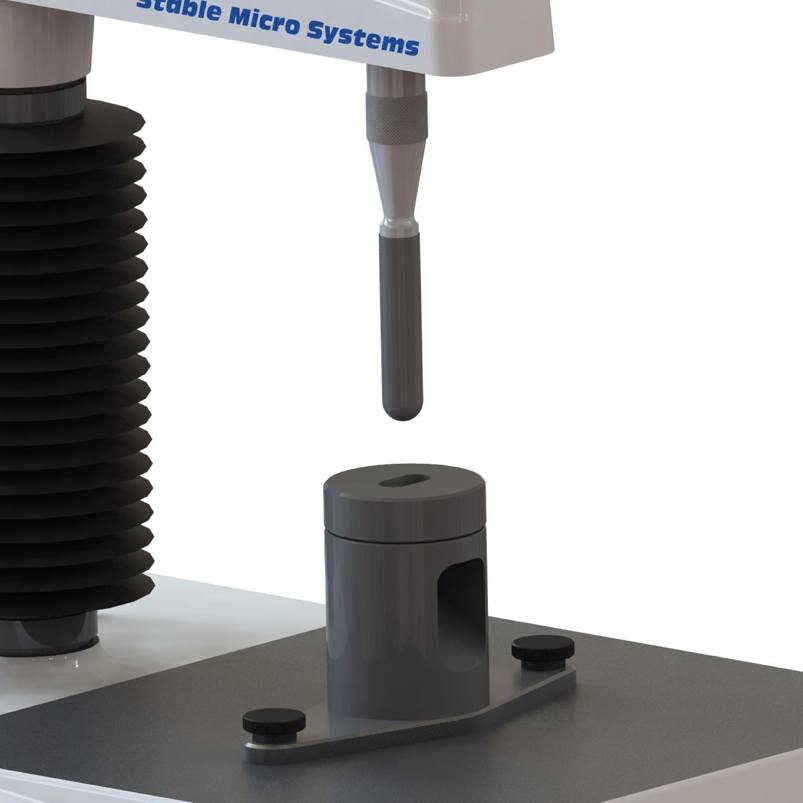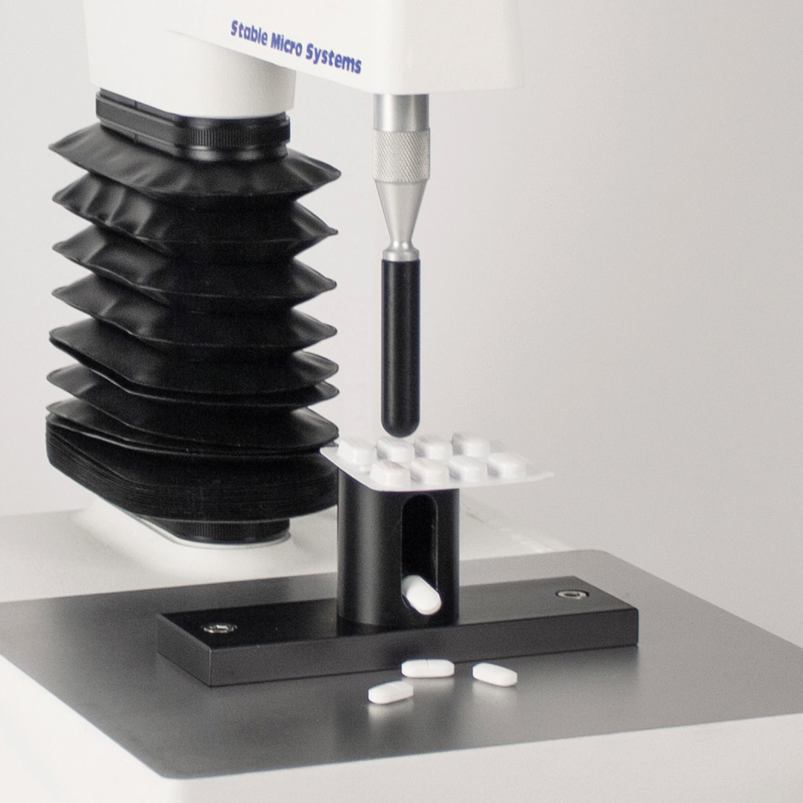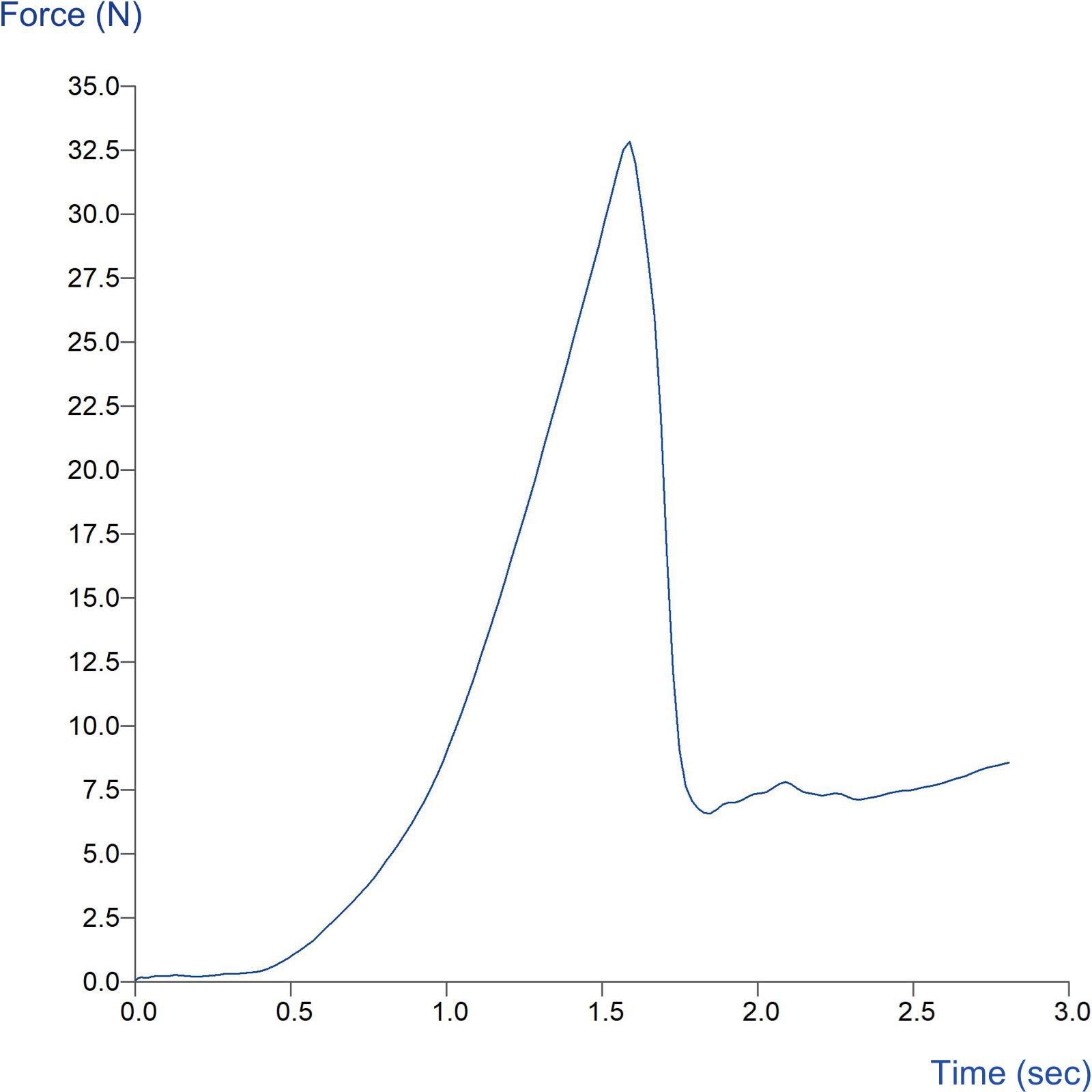Product overview
There are a range of tests available which quantify the characteristics of blister packs. Perhaps the most important test is to measure the force required to remove the tablet from its blister pack. This simple imitative test, which can be quickly performed on a complete strip of tablets, enables the average extraction force as well as the maximum and minimum extraction forces to be determined. Such a test enables any problem within the packaging process to be quickly identified. Ideally extraction forces should be minimal enough to be opened by weak or elderly patients but should be strong enough to avoid opening by children or during transportation.
The test rig supports a blister pack to allow the measurement of the force required to remove the tablet from its blister pack. Compression is provided via a hemispherical probe. This rig is manufactured to customer requirements – a sample blister pack must be shown in order to design a cavity with a shape complimentary to the blister dimensions.
How does the Blister Pack Support Rig work?
Ideal sample form
Stiff blister pack format.
Benefits and limitations
- This attachment is made bespoke to the packaging.
- This attachment needs to be made bespoke to the packaging due to blister pack sample variation.
Technical information
Installation
Full installation instructions are provided within the Education Zone of the latest Exponent/Connect software version and on the technical information sheet accompanying this product.
Chemical compatibility
Stable Micro Systems probes and attachments are commonly made from four materials: anodised aluminium (AA6082 T6), stainless steel (316 T), Delrin (acetyl copolymer) and Perspex (polycarbonate).
In general use, probes and attachments made from these materials will be suitable for testing food products and inert non-food materials.
The four materials listed above are not universally resistant to all types of chemicals and as such the compatibility of the probe/attachment material with the product (to be tested) must be established to prevent damage to the probes and attachments. If the compatibility of the product with the probe is unknown to the customer then the chemical information about the product (Material Safety Data Sheet or Product Data Sheet) should be submitted to Stable Micro Systems. Stable Micro Systems will then assess the suitability of the probe/attachment material for use with the product and advise accordingly. If this advice is not sought then Stable Micro Systems will not accept liability for probes/attachments damaged by chemical attack from the product being tested.
Cleaning and maintenance
All probes and attachments may be cleaned in warm (or hand hot) water using a mild detergent. A soft brush may be used but abrasive cleaning aids should be avoided. Stable Micro Systems products should not be microwaved or cleaned in a dishwasher.
Screw threads should be lightly lubricated after drying using a light lubricant, e.g. petroleum jelly, mineral oil. This will aid the fitting and unscrewing of the item. Each component of a probe or attachment should be wrapped separately when stored, to avoid scratching or chipping. This will safeguard against any unnecessary damage to the accessory.



